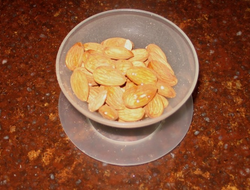Copper: an essential trace mineral
Published: January 25, 2019
Copper is a metal element and an essential dietary trace mineral required for several important metabolic reactions in your body.
Chemically, copper is considered an inorganic element and is represented by the symbol Cu, but exists in several forms such as Cu2+ and Cu1+.
In its inorganic form copper has a variety of uses as a conductor of heat and electricity, a constituent of metal alloys, and as a building and sculpting material.
As an essential dietary nutrient found in a variety of foods, copper is found in organic forms in living organisms most often bound to individual amino acids within proteins.
Your body contains about 100 mg of copper in various tissues and cells as a component of several biologically important enzymes.
Copper, in its organic form may also be used in bacteriostatic and fungal preparations, as well as wood preservatives.
Within your body, copper containing metalloenzymes are generally involved in oxygen consuming reactions or reactions which involve oxygen radicals.
Sources
Copper is derived from two sources: exogenous or dietary sources, and endogenous or from within your body.
Exogenous dietary sources of copper include legumes, whole grains, nuts, seeds, organ meats, shell fish, and potatoes.
The copper content of food depends on the copper content of soil and water where the food originated, and how the food has been processed and prepared for use.
Water is also a source of copper, but the copper content depends on the type of plumbing materials, and also the hardness of the water which is dependent on the minerals in the soil and rock through which water passes.
Endogenous sources of copper refer to available copper within your body.
As part of your metabolic processes copper is secreted into your gastrointestinal tract in your digestive juices.
Your saliva may contain up to 400 mcg, gastric juices up to 1000 mcg, pancreatic juice 1300 mcg and your duodenal juices 2200 mcg. Copper secretion occurs daily.
However, low intakes of copper overtime will reduce the amount of copper that is in these various body secretions.
Functions
Copper containing enzymes have a variety of functions:
Oxidation of minerals
Copper is a co-factor for the enzyme ceruloplasmin which is found in your blood and bound to cell membranes.
As an oxidative enzyme, ceruloplasmin catalyses the binding of iron to transferrin which transports iron to various tissues including bone marrow, and is involved in hemoglobin synthesis.
Ceruloplasmin is also involved in manganese oxidation. As an antioxidant ceruloplasmin protects cells by scavenging free radicals.
Ceruloplasmin also..link to the full article to learn more.
References
1.
Gropper, S.S., Smith, J.L. & Groff, J.L. (2005). Advanced Nutrition and Human Metabolism (4thEd.). Belmont, CA: Thomson Wadsworth.
2.
Whitney, E. & Rady Rolfes, S. (2005). Understanding Nutrition. Belmont, CA: Thomson Wadsworth
6.
Center for Science in the public interest (November 2013)

